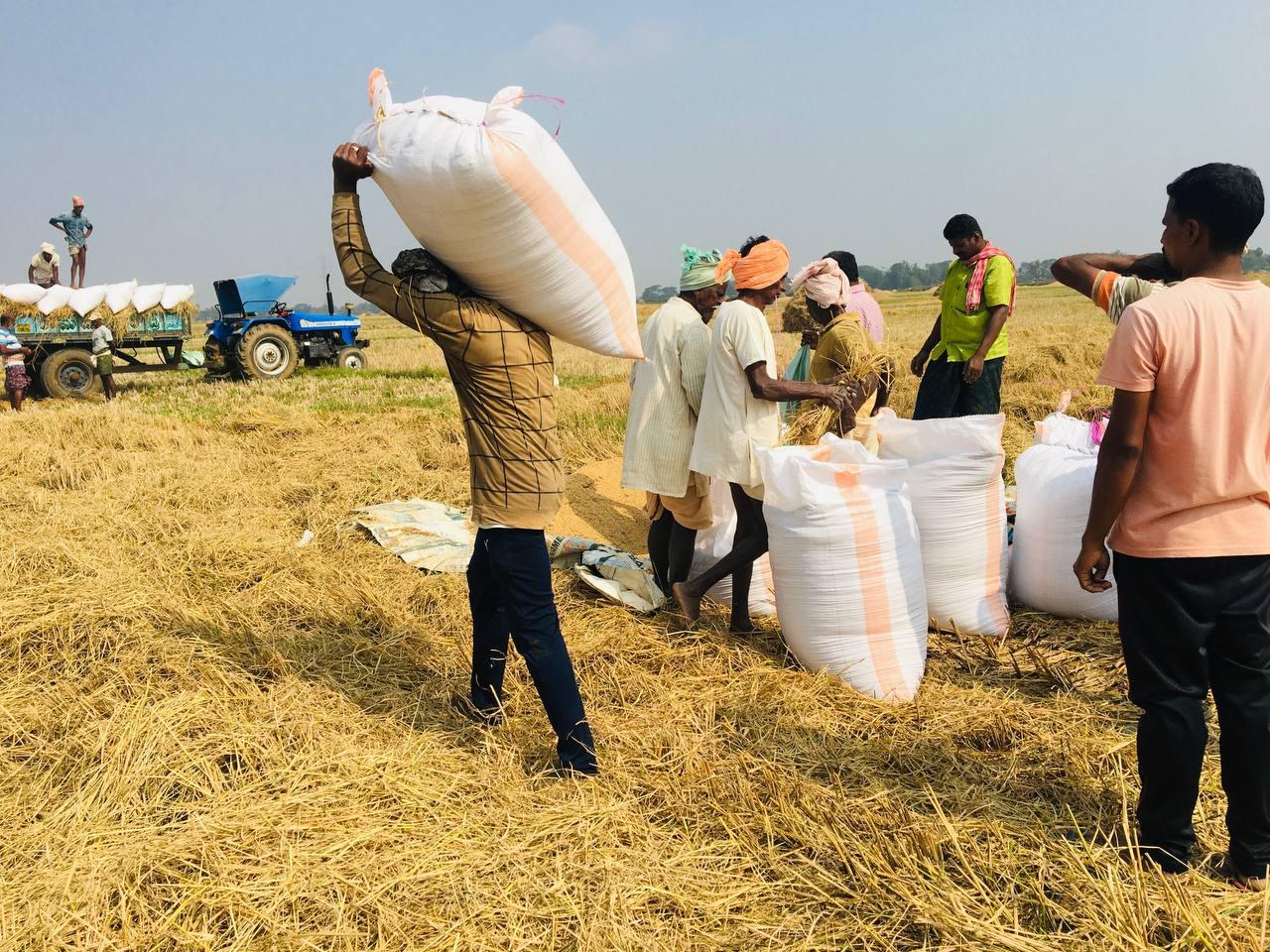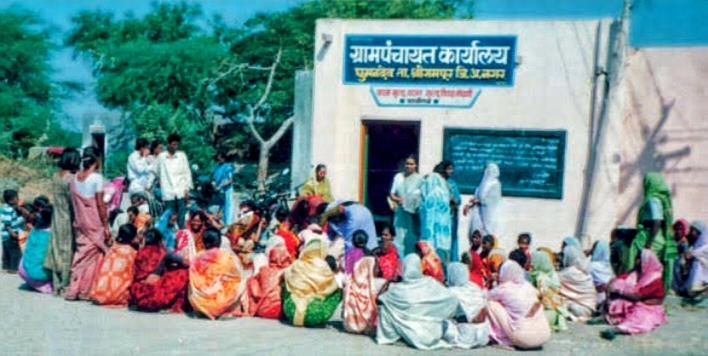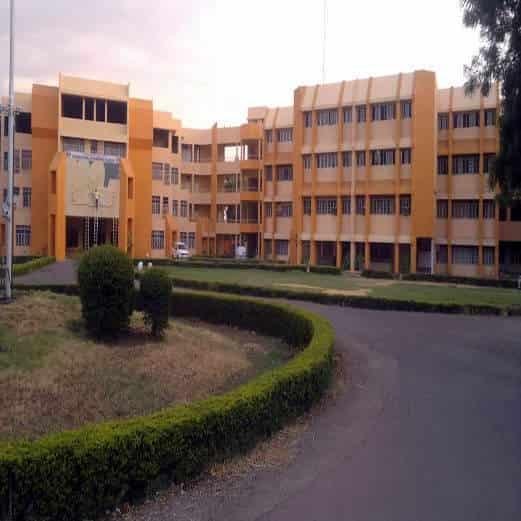Contents
- Occupations and Employment Patterns
- Labor Unions
- Technical Education Institutions
- Graphs
- Workforce Composition
- A. Main Worker Population
- B. Marginal Worker Population
- C. Non-Worker Population
- D. Age Composition of Main Workers
- E. Age Composition of Marginal Workers
- F. Age Composition of Non-Workers
- Employment Characteristics
- A. Number of Workers
- B. Workers: Hired vs Not-Hired
- C. People Working in Govt Sector/PSUs
- D. People Working in Cooperatives
- E. People Working in Private Sector
- F. People Working in MSMEs
- G. Govt, Semi-Govt, and Private Employees
- H. Government Employment
- MNREGA
- A. Participation in MNREGA
- B. MNREGA Household Scope
- C. Job Cards Issued
- D. Job Cards Issued for SC and ST
- E. MNREGA Accounts
AHILYANAGAR
Labor
Last updated on 7 November 2025. Help us improve the information on this page by clicking on suggest edits or writing to us.
The history of labor in Ahilyanagar is deeply rooted in agriculture. For centuries, the region has thrived as an agricultural hub, thanks to its fertile soil and favorable climate. A significant turning point in the labor landscape occurred with the establishment of cooperative societies in the mid-20th century. The cooperative movement in Maharashtra gained traction after independence, with Ahilyanagar serving as a key center for these initiatives. The first cooperative sugar factory in India was established in Pravaranagar (present-day Loni, also known as Loni-pravara in Rahata taluka, Ahilyanagar). in 1950, setting a precedent for cooperative farming and production. This movement empowered local farmers by improving their access to markets, resources, and financial support.
The cooperative movement not only boosted agricultural productivity but also generated numerous job opportunities within the sector. Farmers were able to pool resources, share knowledge, and negotiate better prices for their produce collectively. Additionally, the cooperative model encouraged women's participation in agriculture and related sectors. Women began taking on roles as workers and leaders within cooperatives, contributing to family incomes and community development.
Occupations and Employment Patterns
Agriculture remains the predominant occupation in Ahilyanagar district, where most residents are engaged in farming-related activities (See chapter on agriculture for more). The district is primarily agrarian with diverse crop cultivation including food grains such as jowar (sorghum), bajra (pearl millet), wheat, rice; cash crops like sugarcane, cotton, groundnuts; and pulses such as tur (pigeon pea) and gram (chickpea). Horticulture plays a vital role with crops like onions, tomatoes, grapes, and pomegranates being cultivated extensively. Animal husbandry is another significant occupation where residents raise cattle, buffaloes, goats, and poultry for dairy production as well as meat supply (See chapter on livestock for more). Many individuals also support agriculture through irrigation management—a critical aspect given the region's semi-arid climate—while processing agricultural produce through sugar mills for sugarcane or oil extraction units for groundnuts contributes significantly to local economies.

According to locals, many young individuals feel inclined to take over family farms, often introducing innovative practices such as organic farming and modern equipment to ensure stable incomes while maintaining family traditions. However, others gravitate toward modern industries and professional careers, seeking higher-paying jobs predominantly in urban centers.
In the Ahilyanagar district, seasonal labor extends beyond agriculture into various sectors. The construction sector is a significant area that requires additional labor, particularly during peak building seasons after the monsoon when construction activities resume in full swing. The tourism and hospitality industries also heavily depend on seasonal workers. During the tourist season, especially in popular places like Shirdi, which is a major tourism site in the district, there is a high demand for extra labor to accommodate the influx of visitors. Additionally, the textile industry in Ahilyanagar experiences increased labor requirements during busy production periods to meet export deadlines, particularly in mills and garment factories. Sugar mills create substantial employment opportunities during the sugarcane harvesting and processing season, which sees a surge in labor needs. Dairy farming also has specific seasonal demands, especially during calving seasons and periods of high demand for milk and milk products. Lastly, horticulture activities such as the cultivation and harvesting of fruits, vegetables, and flowers require additional workers to manage the increased workload effectively.
According to locals, many individuals leave farming jobs for industrial work, moving to cities like Mumbai, Pune, and Nashik to find employment in factories related to textiles, automotive, and electronics. While many migrants return to Ahilyanagar after completing short-term work—particularly those involved in agriculture and construction—those who seek long-term employment may not return permanently but might visit for festivals or family events.

Women actively participate in Self-Help Groups (SHGs) that focus on income-generating activities like handicrafts, tailoring, food processing, and small business operations, which are increasingly recognized as socially acceptable roles. Furthermore, women have begun working across various sectors, including education, healthcare, retail, and public administration. Improved access to educational resources has enabled greater participation in diverse fields.
Interestingly, traditional occupations such as astrology continue to exist in Ahilyanagar, but they are losing popularity due to societal, economic, and cultural shifts. While these practices remain culturally significant and are often consulted during important life events, traditional astrologers primarily maintain respect among older generations. Younger populations tend to favor modern professions and rely on scientific methodologies instead of age-old practices. Traditional crafts like weaving, pottery, and artisanal work persist but now often supplement other income sources rather than serve as the primary means of livelihood.
Labor Unions
Labor unions exist within Ahilyanagar but vary widely by sector regarding their activity levels and influence. In agriculture, unions are relatively rare; small farmers often rely on community networks rather than formal union representation. They tend to form cooperatives that address issues related to pricing and access to resources instead of engaging with unions directly. Conversely, unions are more active within industrial sectors where they advocate for fair wages and safe working conditions through collective bargaining efforts that may include organizing strikes when necessary. In the service sector, union activity varies; teachers' unions and healthcare workers' unions tend to be more organized compared to others. Challenges faced by these unions include fragmentation; multiple unions representing different groups often complicate unified action efforts.
Technical Education Institutions

Government ITIs and private ITIs offer vocational training, such as electrician skills, with practical experience. Amrutvahini Polytechnic and Government Polytechnic offer engineering diplomas, while Amrutvahini College of Engineering provides comprehensive engineering degrees tailored to meet the needs of local industries.
Graphs
Workforce Composition
Employment Characteristics
MNREGA
Last updated on 7 November 2025. Help us improve the information on this page by clicking on suggest edits or writing to us.